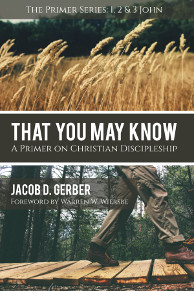Bible Readings for January 2nd
Genesis 2 | Matthew 2 | Ezra 2 | Acts 2
Where Genesis 1 gave a fly-by overview of creation, Genesis 2 slows the narrative down to tell us more details about the creation of Adam and Eve, as well as Yahweh’s purposes for humankind on earth. In Genesis 2, we see a different dimension to the story of God’s creation—we see that God intended creation to be the place where he dwelt with humankind on the earth.1
Specifically, God created the Garden of Eden to be his holy, perfect dwelling place on the earth so that he could dwell with his people on the earth. We might get the idea that all of the earth was beautiful and lush and perfect at creation, but that isn’t quite what we are seeing in Genesis 2. Rather, we see that Yahweh planted a special garden in Eden, where he placed the man Adam and the woman Eve to live (Gen. 2:8).
This garden is at the center of creation, so that rivers flowed out of Eden to water the whole earth (Gen. 2:10–14). In this garden, Yahweh planted all kinds of trees with food good for Adam and Eve to eat, as well as two unique trees: the tree of life and the tree of the knowledge of good and evil (Gen. 2:9).
As for the man, we read that Yahweh put him in the Garden of Eden “to work it [‘abad] and keep it [shamar]” (Gen. 2:15). These words are fascinating because they are primarily used in the Bible to describe priestly work in Exodus, Leviticus, Numbers, and Deuteronomy. The priests were the ones who served (‘abad) in the tabernacle, keeping/guarding (shamar) the holy furniture in the tabernacle as well as Yahweh’s holy law.
Adam, then, was God’s first priest, serving in the Garden of Eden as his temple. Probably what it meant originally to work and keep the Garden of Eden was to cultivate and expand the boundaries of the garden bit by bit, so that as Adam and Eve fruitfully multiplied by bearing children to fill the whole earth (Gen. 1:28), the Garden of Eden would also expand to fill the whole earth.
In this way, the whole earth would be filled with the glory of God—not only with a temple stretching across all of creation, but also with God’s own image-bearers spreading out across the whole land that God had created.
But of course, while this may have been the original intention for creation, when sin entered the world in Genesis 3, everything changed. In tomorrow’s reading, we will see not only how Yahweh could no longer dwell with his people in the same way after they sinned but also what he vowed to do in order to re-establish what sin would destroy in Eden.
1 Almost all of the content from this meditation comes from G. K. Beale’s masterpiece The Temple and the Church’s Mission (Downers Grove, IL: IVP Academic, 2004), a book I highly recommend for further study on the Garden of Eden, the temple, and the theology of God’s dwelling place.
Podcast: Play in new window | Download (4.8MB) | Embed
Subscribe: Apple Podcasts | RSS | More

Scripture quotations are from The Holy Bible, English Standard Version copyright © 2001 by Crossway Bibles, a division of Good News Publishers. Used by permission. All rights reserved.



I have read McCheyne’s plan for years. To discover this Daily Bible Study makes me beyond thankful. I’m so excited about this years reading!
Thanks so much, Lisa! I’m really glad that you are enjoying it!